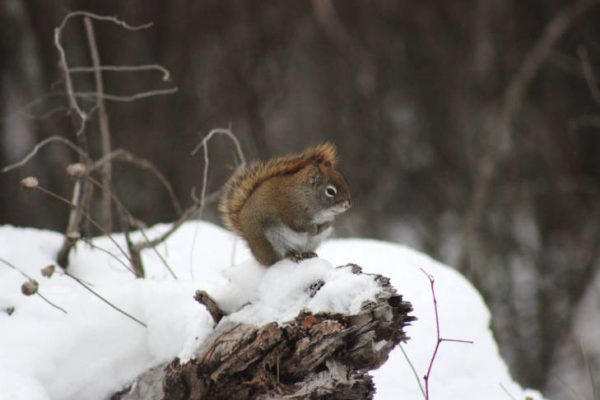
A recently discovered virus that is only known to have infected two humans — both in Fairbanks — is suspected to be caused by contact with small animals.
The virus is known as “Alaskapox.”
Anchorage-based CDC disease detective Eric Mooring said the Alaskapox was first identified after a Fairbanks woman sought medical attention for a small skin lesion, pained fever and fatigue in July 2015.
A sample of the lesion was tested, and a surprising result came back, Mooring said.
“It was a type of orthopoxvirus, but it wasn’t a specific species of orthopoxvirus that they already knew about,” he said. “So they sent the sample to the Centers for Disease Control and Prevention in Atlanta for further study and, at that point, they found a new virus.”
Mooring said a second Fairbanks woman with no known connection to the first was found to have the virus this past August. Scientists suspect both women may have gotten the virus from contact with small wild animals.
“The first patient reported seeing various small animals around her home, seeing animal droppings, and her children hunted squirrels,” he said. “For the second patient, she did report that one of her cats captured and killed small mammals on her property. So we certainly know that they were around.”
Mooring is working with scientists at the University of Alaska Museum of the North in Fairbanks to trap and test small animals for Alaskapox.
He said that the discovery of a new virus is rare.
“Within this group of viruses called orthopoxviruses, this is one of at least three that have been identified in the past decade. So it does happen, but it’s very rare,” he said. “Estimates of the number of new viral diseases of humans that are identified each year are on the order of two to four.”
Luckily, Mooring said, there is not a need for public concern.
“I want to emphasize that we have no evidence that it spreads from person to person,” he said. “Common sense measures around hygiene and avoiding touching wildlife will hopefully hold people in good stead.”
Mooring said the initial discovery of the new virus, following its identification in the Fairbanks patient in 2015, was published in a scientific paper, but he’s not sure how much public awareness there was at the time.
Dan Bross is a reporter at KUAC in Fairbanks.




